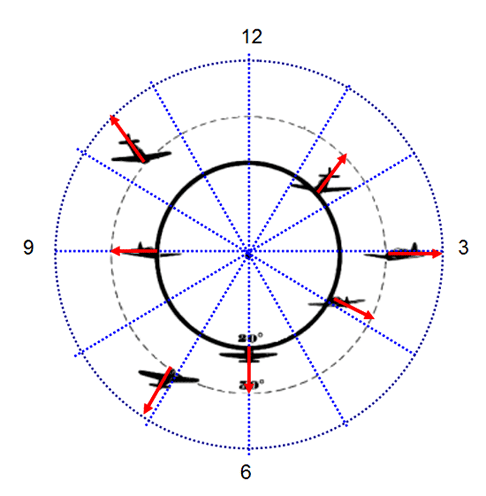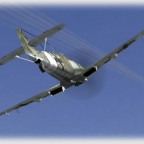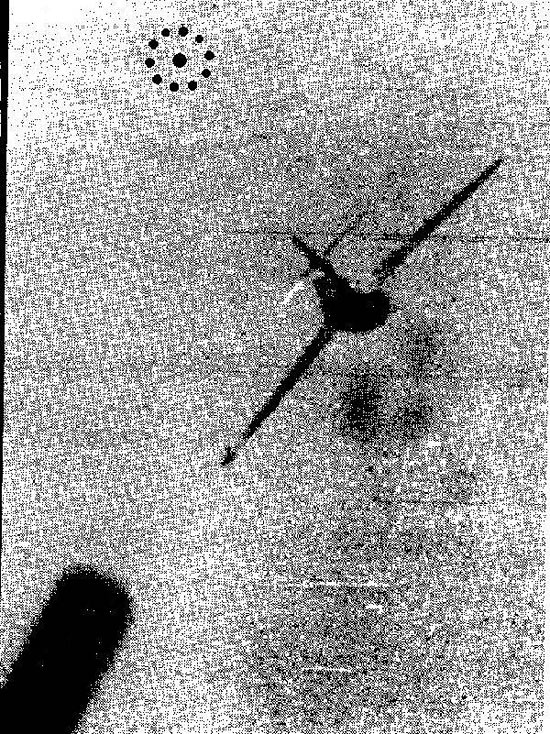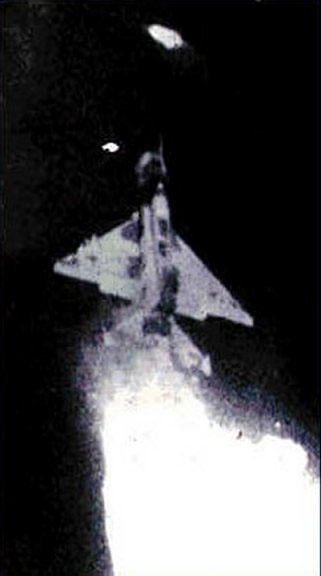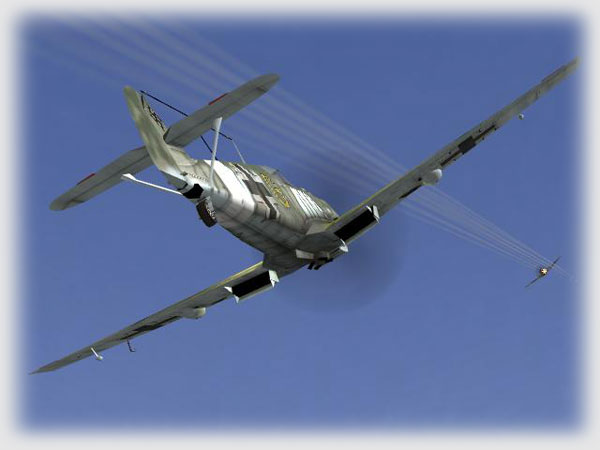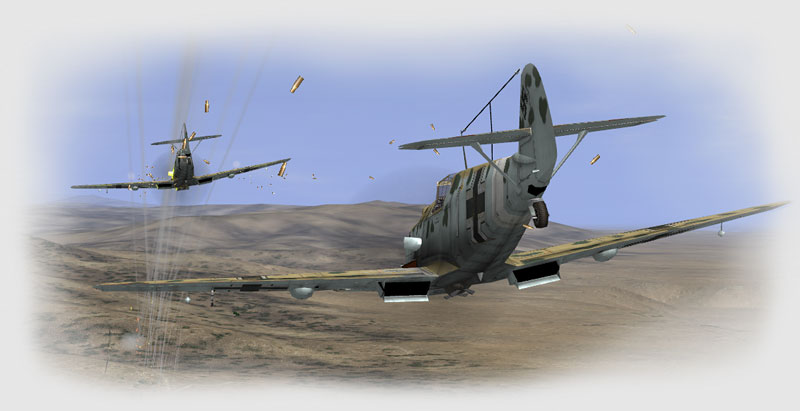Placing the Target on the Sight
It is critical that the target is placed in the sight, not the sight onto the target. It may seem like a fine distinction, but it is all in how one maneuvers the plane to get the right picture that makes the difference. When the target is in the right place on the sight, fire. I found that when my focus remains where it belongs — on the target — rather than on the sight I fly much more smoothly, which helps my accuracy.
If one is focused on the moving the sight to the target rather that the other way around all sorts of goofy maneuvers happen. If one applies rudder, the site moves away from or towards the target — neat. Ditto elevator and ailerons! Pretty soon one can find that the efforts to move the sight to the target has rendered a plane that is flying completely katywhompus, burning energy like Times Square on New Year’s Eve and departing flight.
Off my soap box and on to how it gets done!
We used the angular measurement of the sight to determine distance from the aircraft to the target – now we’re going to use it to measure distance from the target to where our rounds will intersect the target’s path of flight.
For simplicity, let’s use the Hurricane’s sight. It has rudimentary supplementary lines, no supplementary rings, and if one can learn it, the rest is easy.
The ring represents a twenty degree angle from center to circle (it’s forty degrees from side to side).
Let’s draw some imaginary lines representing five, ten, and thirty degrees to serve as a guide.
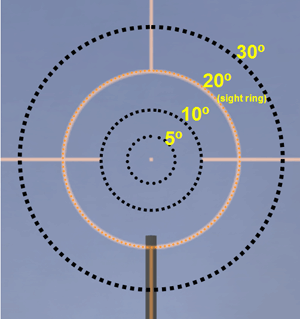
Here’s the cool part — when a target is in firing range and the nose is placed on the appropriate place on the sight given the target’s angle off, the rounds will strike the target.
Now it’s just a matter of placing the nose of the target in the right part of the sight based on it’s Angle Off. Since it just doesn’t get any better than the RAF pamphlet, I’ll just steal the scan and clean it up a bit:
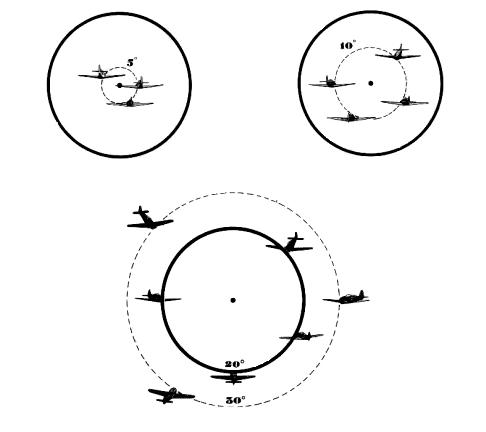
One thing to notice is that where on the circle (high or low) to place it is all about the fuselage. Think of the fuselage of the plane as the minute hand pointing to a number on an analog clock, and place the nose at the corresponding number once circle further out.
Let’s look at that twenty and thirty degree Angle Off picture again, but this time with some lines added in for the clock and some supplementary lines thrown in:
